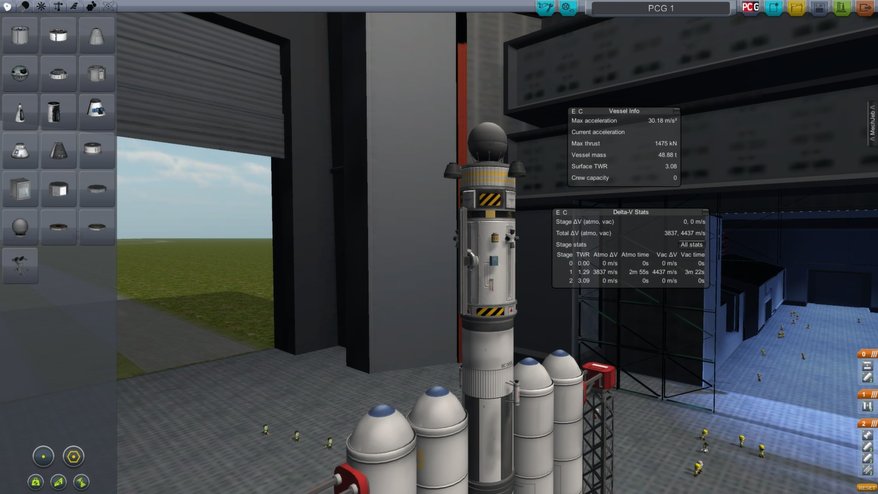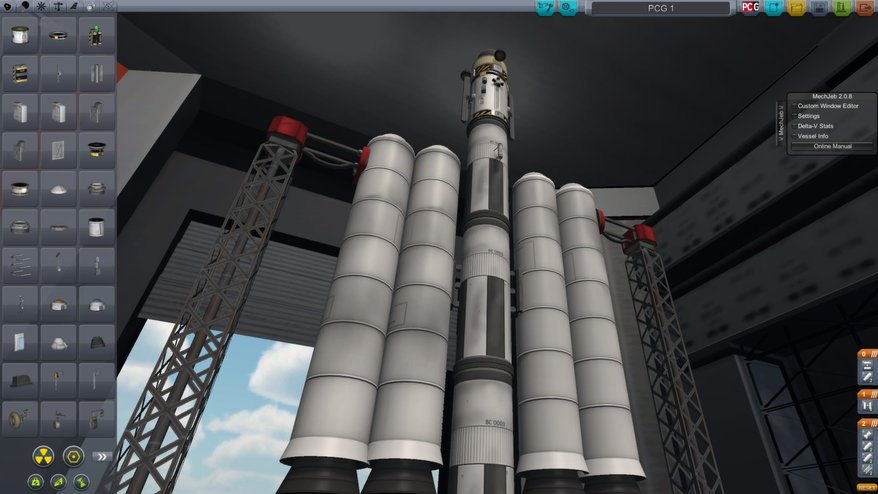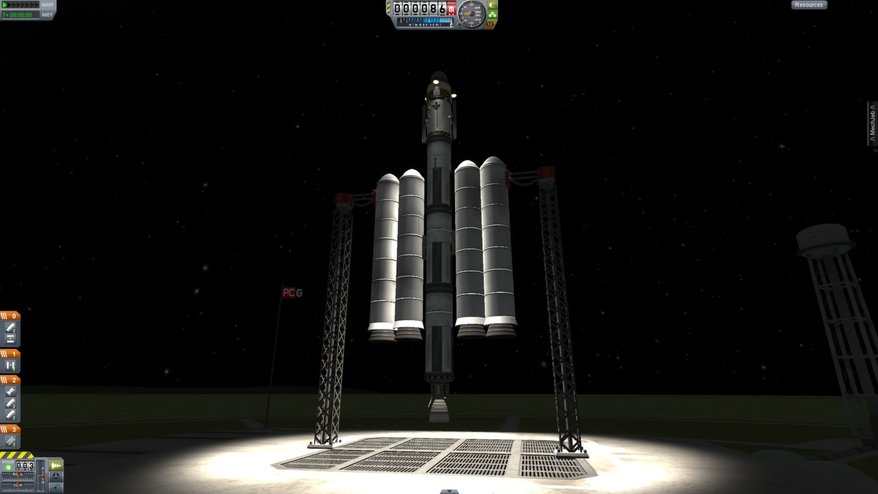Kerbal Space Program chronicle — part one: achieving orbit for science

With the RCS thrusters in place, the last thing to add is a pair of solar panel arrays and scientific instruments. This little satellite is a great first step for a couple of reasons. First, it will get up there and do some science: always good. Second, it weighs in at 2.12 tons, according to the MechJeb readout, which is a reliable stand-in for what my first manned craft will weigh. When I design the rocket to get this satellite to space, I can just reuse that same design to take the first Kerbal to orbit.
This is one place where the MechJeb information readouts can come in handy, even though I don't want to use the autopilots. By bringing up the Thrust-to-Weight Ratio reading, I can see that this rocket has a TWR of 3.09 at liftoff. Anything above 1 means that the rocket can successfully reach orbit, so I've got some room to spare.

I'm using a variation on the Titan rocket design made famous by the early NASA missions. It's got a tall, large central engine with a booster rocket pair on each side. It's simple, easy to build, and a pile of dead Kerbal test pilots tells me that, unlike other more complicated designs, it tends to stay balanced without a lot of fuss.
Some egghead from a local university tells me that a key element of rocket design is building in stages. When I first launch, I will want every bit of thrust available firing all at once. When fuel tanks or booster rockets are empty, staging allows me to jettison the dead weight at the press of a button. Looking at the stages plotted by my design team, I do an imaginary dry run through to make sure everything is in order. The last thing to add is a pair of holding clamps that will keep the rocket upright so that the whole thing isn't resting on the delicate machinery of my main engine.

And now, the moment of truth. Sitting on the launchpad, I engage stabilizers to keep the ship upright, throttle up and pull the trigger.
The biggest gaming news, reviews and hardware deals
Keep up to date with the most important stories and the best deals, as picked by the PC Gamer team.

